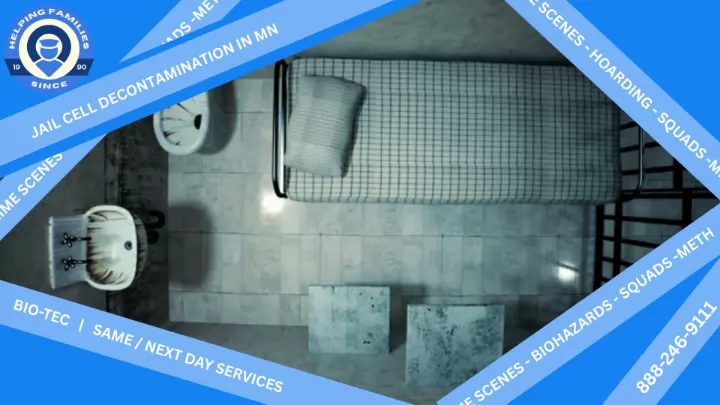What protocol is followed when biohazards contaminate vehicle-mounted tasers?
Tasers are cleaned with non-corrosive agents to ensure functionality while eliminating biohazards.
How often should mold testing be done?
It depends on environmental conditions but testing is recommended after water damage or health concerns.
How can fentanyl contaminate a property?
Fentanyl can contaminate a property in multiple ways. Properties where fentanyl is produced, handled, or consumed are at significant risk of contamination. Residual fentanyl particles may settle on surfaces, textiles, and HVAC systems, creating biohazardous hotspots throughout the property. Contamination can also occur when first responders or cleanup crews do not adequately decontaminate their equipment, inadvertently spreading fentanyl residue to other areas. These contamination vectors make professional decontamination an essential service.
What is the legal requirement for meth lab testing?
Legal requirements vary by region, but many areas mandate testing if meth production is suspected or if the property is being sold or rented. Local regulations may also specify decontamination standards to ensure the property is safe for occupants.
Can meth contamination affect HVAC systems and appliances?
Yes, HVAC systems and household appliances can be significantly affected by meth contamination. During meth production, airborne chemicals are released and circulated throughout the building, often settling into the ducts and ventilation systems. This creates a reservoir for ongoing chemical exposure every time the system is used. Similarly, appliances such as stoves, microwaves, and washing machines can retain contamination on internal surfaces. Even after apparent surface cleaning, residues inside components can pose health hazards. Professional testing often includes HVAC swabs and recommendations for deep cleaning, replacement, or sealing of contaminated systems to prevent re-exposure.
What legal responsibilities do property owners have regarding fentanyl contamination?
Property owners have a legal and ethical responsibility to address fentanyl contamination promptly. Failing to do so can result in liability for harm caused to occupants, visitors, or cleanup crews. In some jurisdictions, landlords may be required to disclose contamination issues to prospective tenants or buyers. Professional cleanup services ensure compliance with legal and regulatory standards, protecting property owners from potential lawsuits and penalties.
Are there federal guidelines for crime scene cleanup?
Federal guidelines primarily come from OSHA and EPA, with additional standards provided by state and local authorities.
What steps are involved in the cleaning process?
The process typically includes an initial contamination assessment, removal of hazardous materials, disinfection, and a final verification inspection.
What specialized vehicles are used in crime scene cleanup?
Outfitted vehicles equipped with decontamination systems, storage for hazardous materials, and advanced cleaning equipment are commonly used.
Which contaminants are typically addressed during this cleaning process?
Common contaminants include blood, bodily fluids, toxic chemicals, drug residues, and other hazardous materials.
